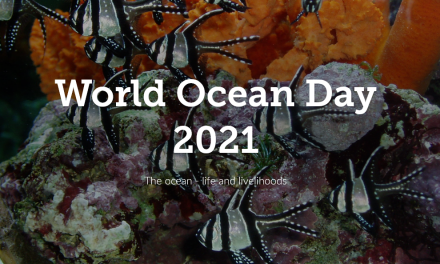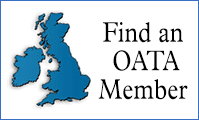We have responded to a draft report on whether positive lists should be accepted by the European Commission. RPA Europe recently presented a first draft of their report to interested stakeholders – and not surprisingly it was very disappointing.
RPA Europe were commissioned to do research and report on ‘the need for, added value of, and feasibility of introducing a “positive list of pets” across the EU’.
However, the draft so far reveals that ideology rather than science seems again to be informing the conclusion so OATA has joined with a number of UK and EU-based pet organisations, such as the European Pet Organization, to raise concerns about the biases already been shown in this draft.
While the UK is no longer in the EU, we continue to maintain strong links with the European Pet Organization because of the need for alignment with European markets. Therefore, issues that take hold in the EU will undoubtedly find their way across the Channel – as indeed can be seen with the concept of positive lists as ways to limit our access to a wide range of pets.
It is through working together that we can build coalitions and share information and messages to counter this.
Read more about what RPA Europe is supposed to be doing.
Read our response below.
OATA's response to the positive list draft report
Dear Mr. Camboni,
We contact you on behalf of the Ornamental Aquatic Trade Association (OATA) – which represents over 800 UK businesses including aquatic retailers, importers and wholesalers, many of which regularly trade with the EU. We welcomed the opportunity to attend the roundtable discussions concerning the “Study on the Need for, Added Value of, and Feasibility of Introducing a ‘Positive List of Pets’ across the EU” – however OATA noted several concerns regarding the current state of the report as it was presented to stakeholders on June 10th.
While stakeholders engagement is always welcomed, we would query as to whether the true stakeholders have been consulted at all. FEDIAF’s European Pet Population and Market Data report (published June 2025 and found here) reported 139 million European households (49%) own one or more pet. Each of these households should be considered stakeholders in any discussions about restricting their ability to keep pets.
Notably, we were struck by the limited range and quality of the sources used. We were not provided a full list of citations for the presentation. Based on experience within the field we identified multiple instances where the data presented was either outdated, unreliable, easily refuted or used flawed methodology (e.g. small sample size extrapolated to reflect global trends). Numerous key scientific articles which challenge the concept of positive lists were notably absent and there was seemingly no critical evaluation of the sources used. It was stated “We expect to finalise the study in the second part of this year…So again, we will be able to check our references”. Given the significance of this report, we would expect citations to be available. Moreover, any report which may influence policymaking decisions should adhere to the strictest scientific rigour as EU law states legislation must be evidence based, proportionate and cause minimal disruption to citizens and businesses. Despite the presence of known data gaps and admittedly questionable sources the report still makes numerous potentially damaging and certainly misleading claims:
“The experience of implementing national positive lists of pets is limited” – Slide 9
Slide 17 highlights eight EU member states with a positive list framework but overlooks the systematic, legal, ideological, and practical challenges each has faced—many resulting in outright failure. Below are just some examples of just some of the ways positive lists have already failed:
- Belgium’s Flemish positive list was annulled by the Council of State in 2024 which concluded the claims of improved animal welfare and public health were unsubstantiated. The verdict also argued that positive lists could potentially promote illegal trade and unfairly impose restrictions on animal traders and keepers (PDF).
- Spain voted on the approval of a positive list on 09/02/2023 with a deadline of 24 months to draft a full list of permitted pets. This species-specific list was never published, and development has been pushed back to the 2030 agenda. Despite the current prohibition on keeping of popular pets (such as the ball python) Spain has seen almost no compliance (New Law on Animal Welfare – Citizens Advice Bureau Spain).
- The Netherlands’ positive list have faced repeated legal defeats after repeated court rulings stating the list were not scientifically substantiated and the decision-making process lacked transparency. The Administrative Jurisdiction of the Council State noted ““The manner in which the aforementioned positive list was established does not meet the European legal requirement of scientific objectivity. The principles of expertise, independence, and transparency have not been met.
- Norway’s prohibition on reptile keeping led to over 100,000 pets reportedly kept with no regulatory oversight, access to veterinary care or expert advice – this negatively impacts their welfare. Enforcement challenges and non-compliance led to a repeal of the exemption list in 2017.
- Slovenia’s recently published reptile positive list was quickly withdrawn without explanation.
- Italy’s partial ban on wild-caught animals has fuelled underground trade and public distrust.
“Interim conclusions – Is There a Need for an EU Positive List? – Evidence of animal welfare issues, especially for ‘exotic’ and non-domesticated species” – Slide 53
- The lack of available data was highlighted throughout the presentation. Arguments were often based on ideological statements rather than objective fact.
- From the data presented it should be concluded that dogs and cats (the so-called “traditional” pets) suffer from poor welfare more frequently than “exotics”.
- Statistics regarding rehoming figures further confirm this – in pre-COVID only 627 reptiles were surrendered to shelters in the UK, compared to over 19,000 dogs and 60,000 cats.
Genuine data driven exercises should surely point towards stricter regulations on dogs and cats as opposed to “exotics” on animal welfare and demographic grounds? We have never seen a proposal for a positive list for dogs that limits the keeping of, for example, brachycephalic dogs (e.g. Pugs, French bulldogs) where there are clear and understood welfare issues around their health. All examples of positive lists allow the keeping of all dogs and cats. This highlights that positive lists are driven by ideology as the political backlash from prohibiting the keeping of certain breeds of dogs or cats would be considerable.
The use of language throughout the presentation seemed clearly biased towards a predetermined outcome. Arguments in favour of positive lists were reinforced using assertive, outcome-focused terms such as “strong case for harmonisation,” or “address systemic issues,” – whereas opposing views were presented in a more distanced and cautious tone, i.e. “concerned about” or “tended to prefer”. A report generated to assess the tone (generated via Open AI. ChatGPT) of the presentation demonstrated that 70-75% of the language used was supportive of a positive list. Only 5-10% represented critical analysis of the positive list and the vast majority of this content was quotations from stakeholder survey responses – as opposed to the authors own evaluations.
| ✅ Supportive | 70–75% | Language that positively frames the need, benefits, feasibility, or value of a positive list; includes policy alignment, risk framing, stakeholder support, and problem justification. |
| ⚖️ Neutral/Balanced | 20–25% | Descriptive or factual language that presents data, outlines methodology, or neutrally reports stakeholder perspectives or legal details without endorsing or rejecting the positive list. |
| ❌ Opposed/Critical | 5–10% | Language that reflects concerns about feasibility, overreach, economic impacts, or implementation burdens—mostly attributed to stakeholders, not the authors themselves. |
Numerous terms were used in the presentation without clear definition; “exotic pets”, “companion pet”, “non-traditional pets”, “wild/exotic pets”, “non-domesticated pets”, “wild pets” and “domesticated pets”. Not only were the terms not clearly defined but their usage varied between presenters and thematic sessions. All the above terms are highly subjective and open to (mis)interpretation – for example one person may call a fancy guppy a companion pet whereas another may say it is an exotic pet. Clear and agreed upon definitions are required within RPA Europe to ensure proportionality in any measures considered necessary. The current language reflects the disproportionate influence of the those opposed to pet keeping, whose intention is to create dissonance. Ultimately the label placed on a particular species should be secondary to whether its needs can be understood and met in captivity.
Most egregious from our point of view was that legal, legitimate trade was conflated with illegal trade throughout the presentation under “the pet trade” umbrella. Legitimate trade “rejects all illegal practices” (European Pet Organisation) and is often involved in identifying and addressing illegal trade. To be considered alongside illegal activity is not only damaging to the reputation of legal and legitimate trade but can undermine efforts to determine the scale of illegal activities.
Contrary to the description in the presentation, the vast majority of pets are legally traded, live in appropriate environments and have their physiological and psychological needs met by dedicated keepers. Advances in equipment, veterinary care and keeper knowledge are primarily driven from within industry and now allow many pets to live longer and healthier lives than their wild counterparts. A key to this successful mutualistic human-animal bond is the ability to choose the right pet for the right keeper, which would be removed with the implementation of a positive list. There are numerous societal benefits provided by pet keeping and it was disheartening to see no mention of these in the presentation. To name a few; positive economic and public health impacts, conservation benefits and increased engagement with nature, supporting sustainable livelihoods around the world and continued advancements in husbandry expertise.
All potential issues with pet keeping raised are covered by current legislation. Animal welfare is a delegated matter and all EU member states have their own welfare regulations. There is no proven need for the EU to extend its authority into this area. The negative list approach used by CITES evaluates animals’ suitability for trade, while the EU Animal Health Law (Reg. EU 2016/429) alongside (EU 2022/925 and 2018/1882) provide a robust legal framework for managing zoonotic diseases. The Action Plan Against Wildlife Trafficking and the Invasive Alien Species Regulation (EU 1143/2014) support responsible, sustainable trade and biodiversity protection—key elements of the EU’s One Health approach. There is no clear evidence that existing legislation is failing, with the European Commission (2020) concluding these laws are sufficiently effective. Supporters of a positive list not only promote the inaccurate belief that current enforcement structures are ineffective – but undermine the work of both national and international regulatory bodies.
Regrettably, RPA Europe has failed to provide the balanced representation of the scientific, legal, animal welfare, ecological and economic issues surrounding positive lists that it promised. Over-reaching, demonstrably unnecessary and prohibitive legislation breeds inefficacy, public distrust and is destined to fail. We urge policymakers to question the integrity and robustness of this report before lending support to legislation which will restrict the rights of millions of decent, animal-loving European citizens.
Yours Sincerely
Mr Dominic Whitmee
Chief Executive at OATA
















